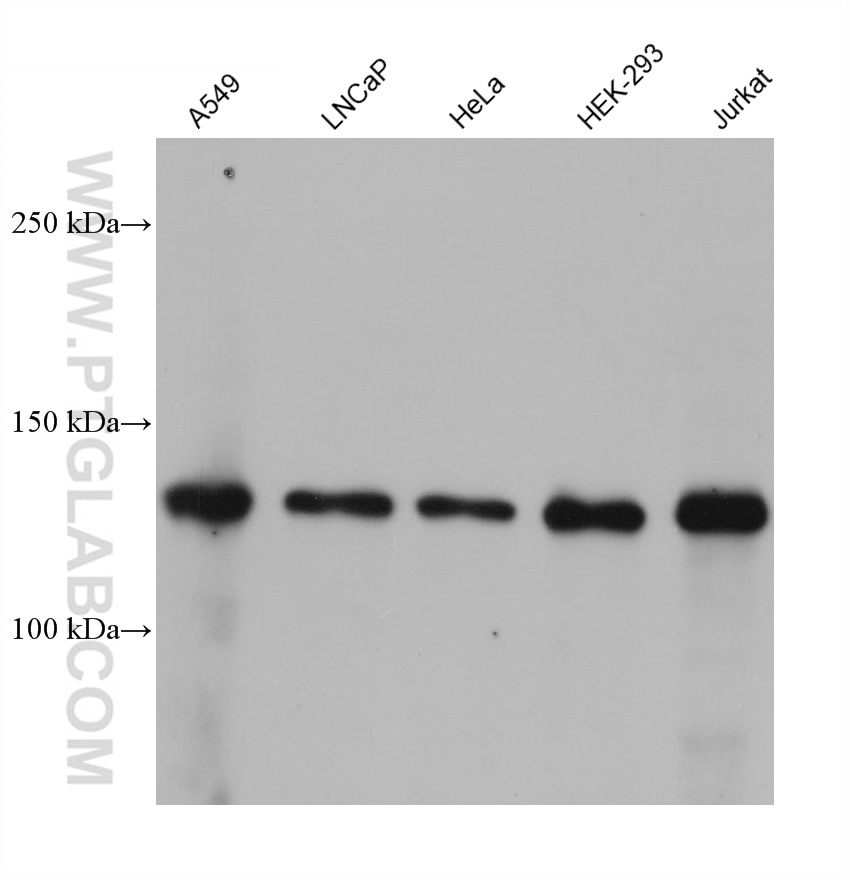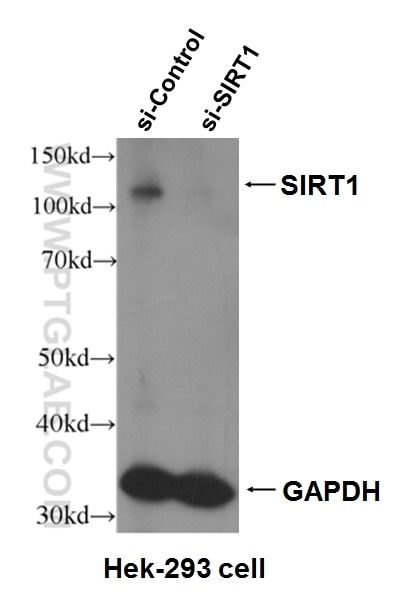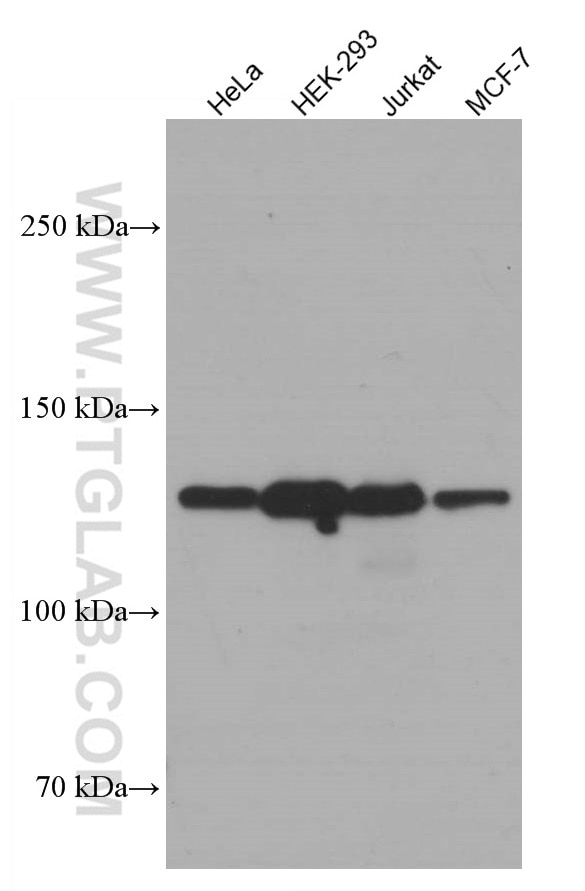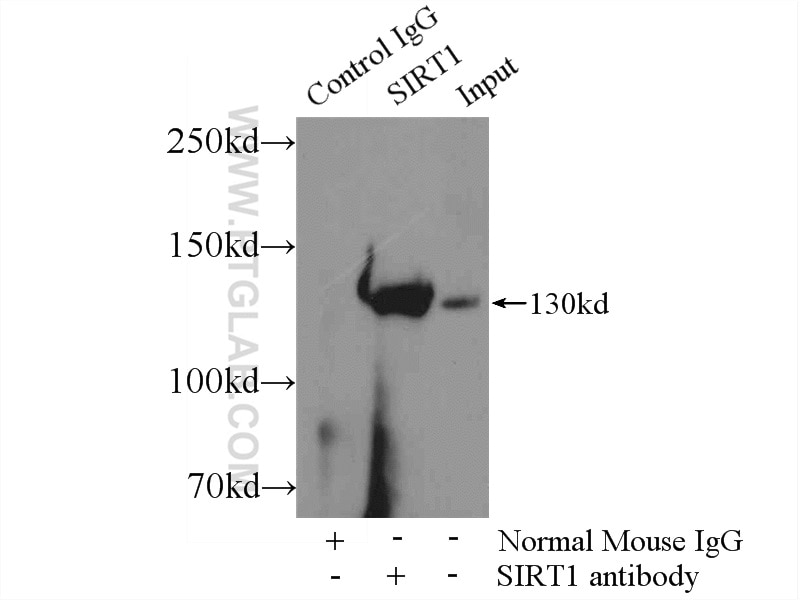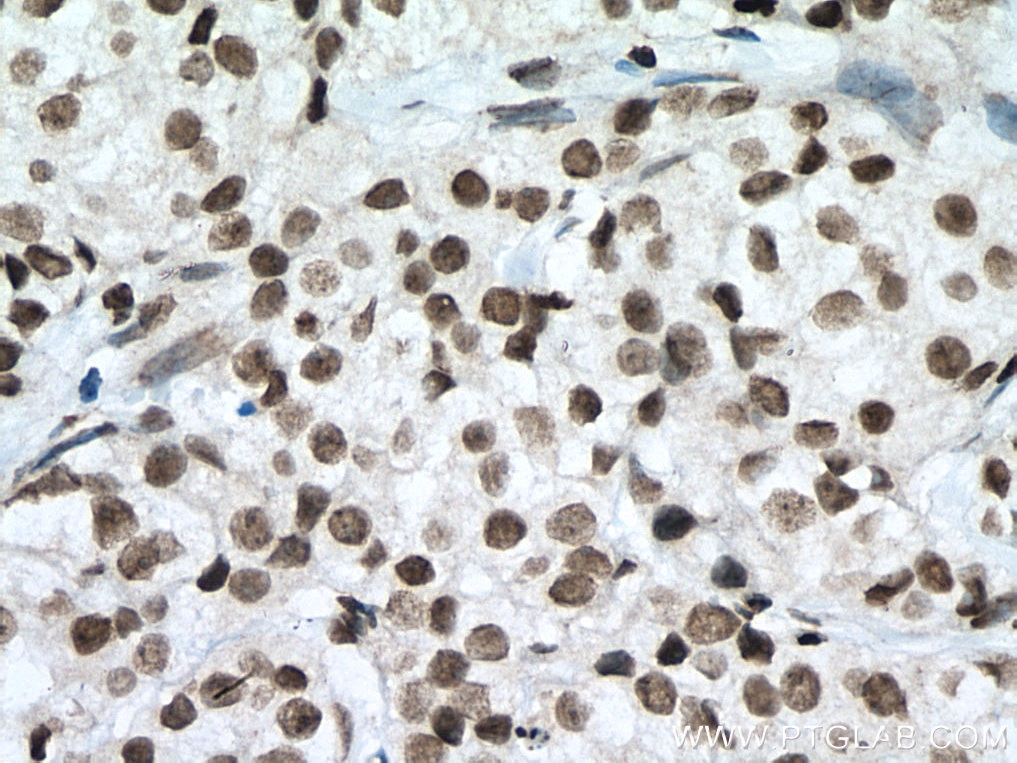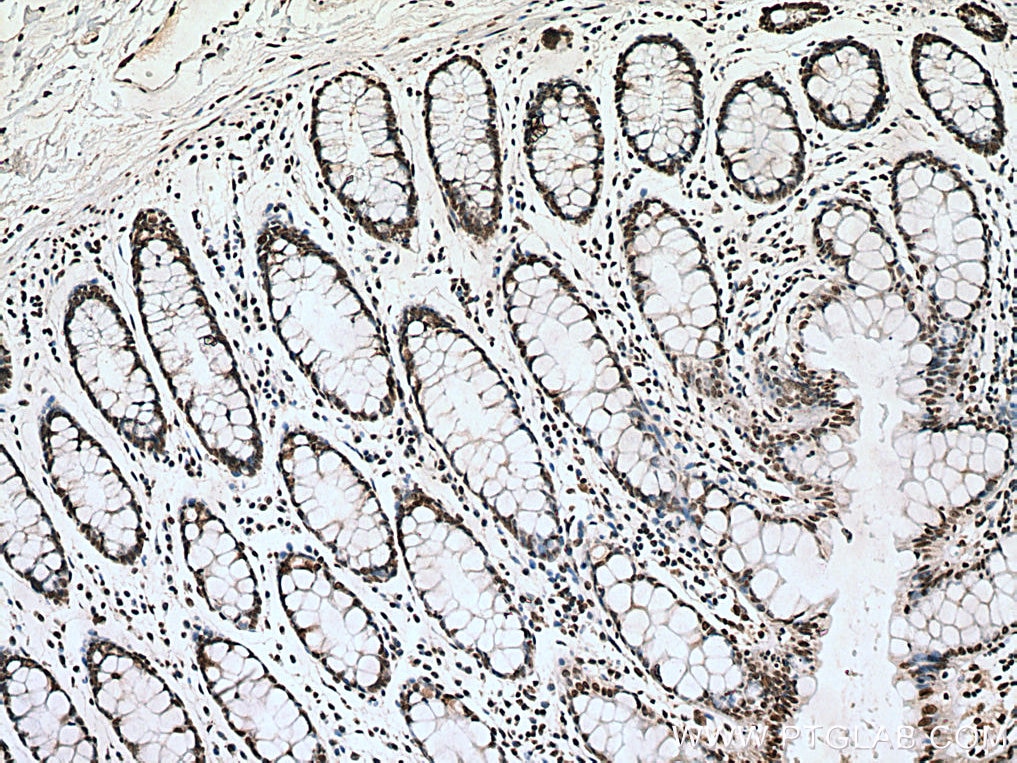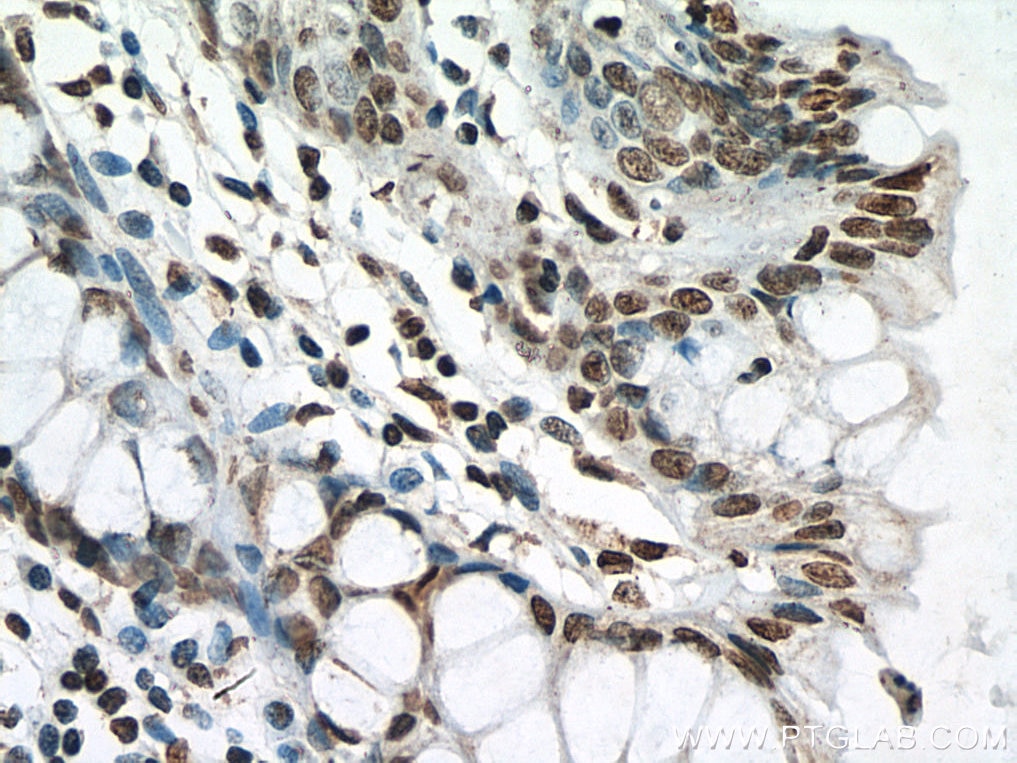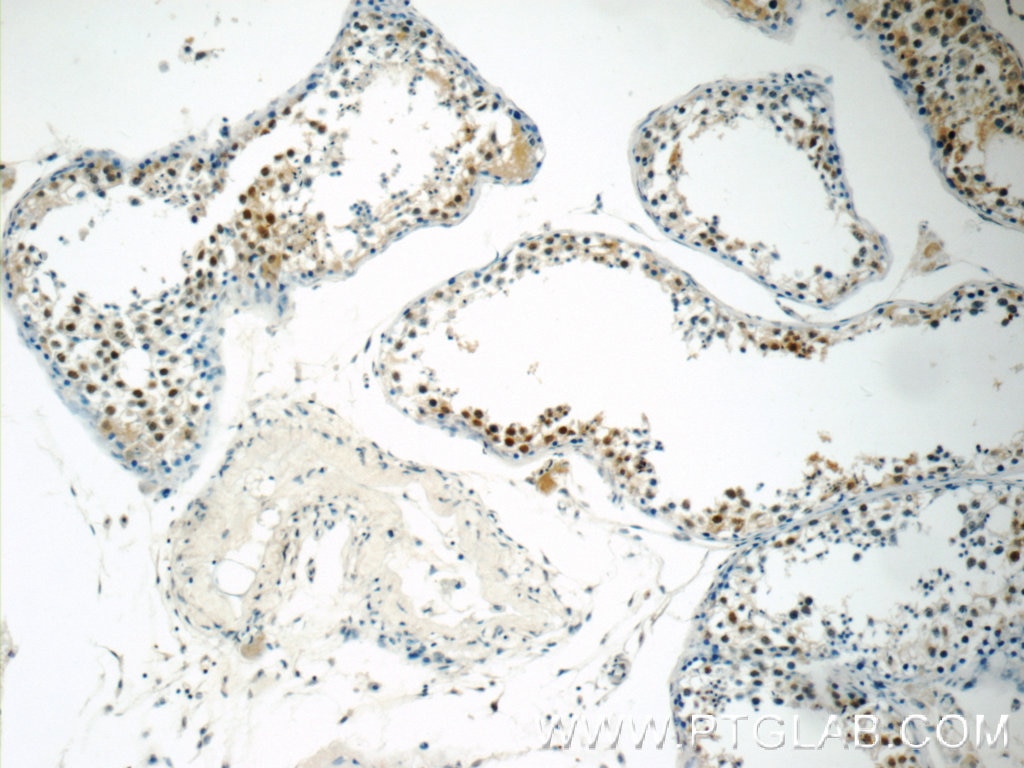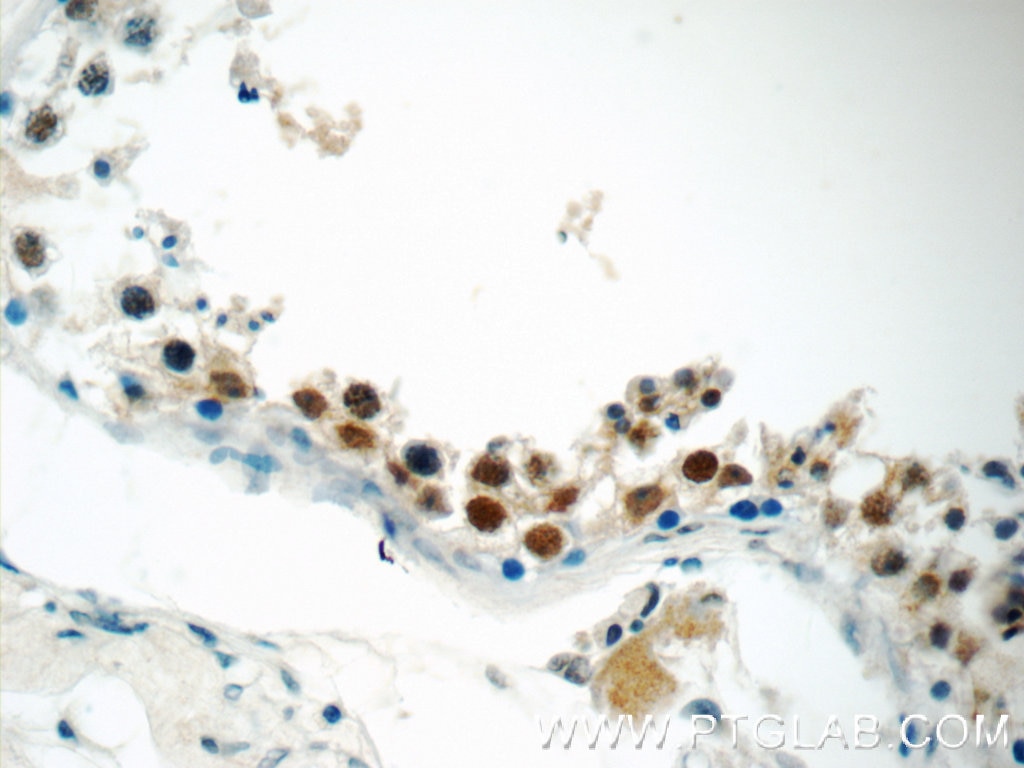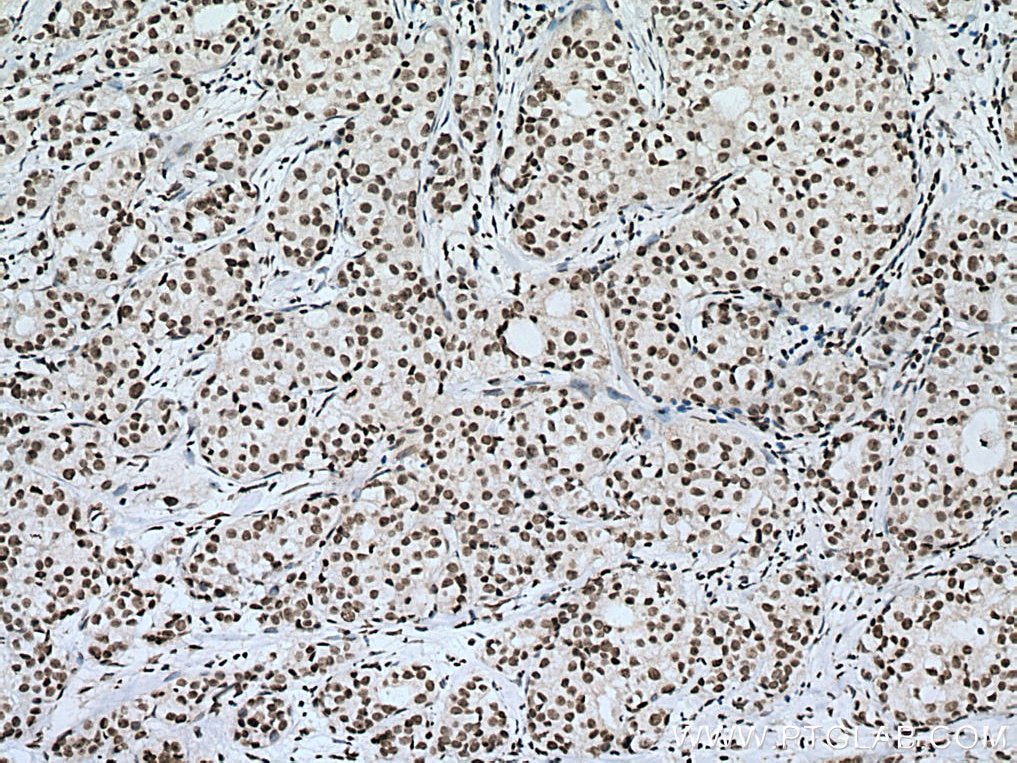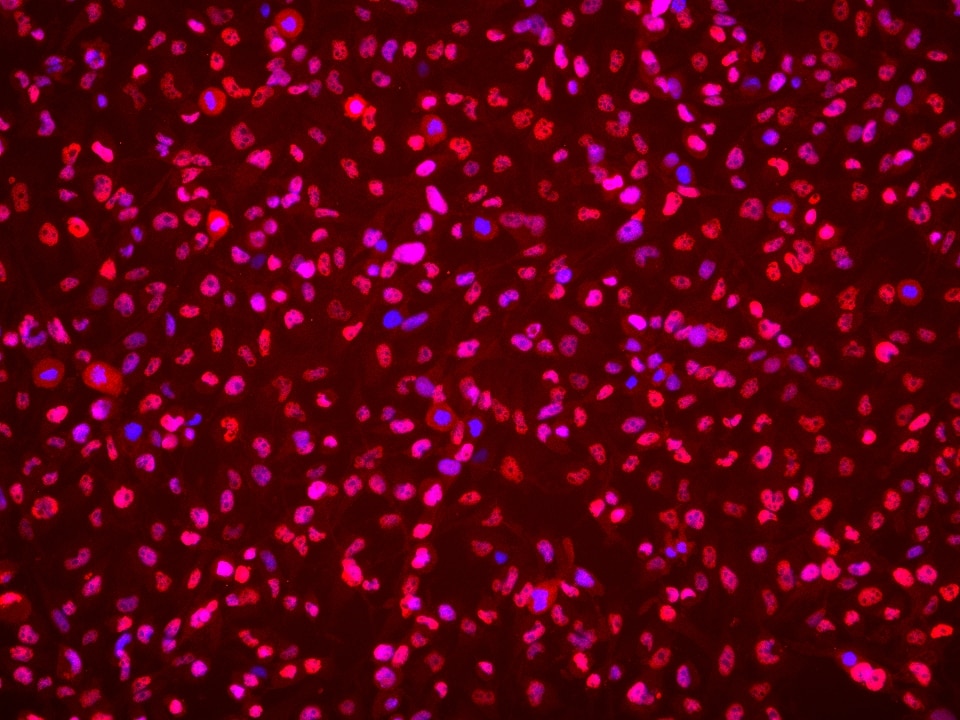- Featured Product
- KD/KO Validated
SIRT1 Monoklonaler Antikörper
SIRT1 Monoklonal Antikörper für WB, IHC, IF/ICC, IP, Indirect ELISA
Wirt / Isotyp
Maus / IgG2b
Getestete Reaktivität
human
Anwendung
WB, IHC, IF/ICC, IP, Indirect ELISA
Konjugation
Unkonjugiert
CloneNo.
7F6G6
Kat-Nr. : 60303-1-PBS
Synonyme
Geprüfte Anwendungen
Produktinformation
60303-1-PBS bindet in WB, IHC, IF/ICC, IP, Indirect ELISA SIRT1 und zeigt Reaktivität mit human
| Getestete Reaktivität | human |
| Wirt / Isotyp | Maus / IgG2b |
| Klonalität | Monoklonal |
| Typ | Antikörper |
| Immunogen | SIRT1 fusion protein Ag17677 |
| Vollständiger Name | sirtuin (silent mating type information regulation 2 homolog) 1 (S. cerevisiae) |
| Berechnetes Molekulargewicht | 747 aa, 82 kDa |
| Beobachtetes Molekulargewicht | 110-130 kDa |
| GenBank-Zugangsnummer | BC012499 |
| Gene symbol | SIRT1 |
| Gene ID (NCBI) | 23411 |
| Konjugation | Unkonjugiert |
| Form | Liquid |
| Reinigungsmethode | Protein-A-Reinigung |
| Lagerungspuffer | PBS only |
| Lagerungsbedingungen | Store at -80°C. 20ul Größen enthalten 0,1% BSA. |
Hintergrundinformationen
SIRT1, also named as SIR2L1, contains a deacetylase sirtuin-type domain and belongs to the sirtuin family. The post-translation modified SIRT1 is a 110-130 kDa protein, which contains one deacetylase sirtuin-type domain. The 75-80 kDa SIRT1 fragment was detected to lack the carboxy-terminus (PMID:21305533). SIRT1 exists a 57-61 kDa isoform. SIRT1 may be found in nucleolus, nuclear euchromatin, heterochromatin and inner membrane. It can shuttles between nucleus and cytoplasm. SIRT1 regulates processes such as apoptosis and muscle differentiation by deacetylating key proteins. SIRT1 in particular initiates several signaling events relevant to cardioprotection, including: activation of endothelial nitric oxide synthase, INS receptor signaling, and autophagy. In addition SIRT1 activation elicits resistance to oxidative stress via regulation of transcription factors and co-activators such as FOXO, Hif-2a, and NF-kB. SIRT1 regulates the p53-dependent DNA damage response pathway by binding to and deacetylating p53, specifically at Lysine 382.
